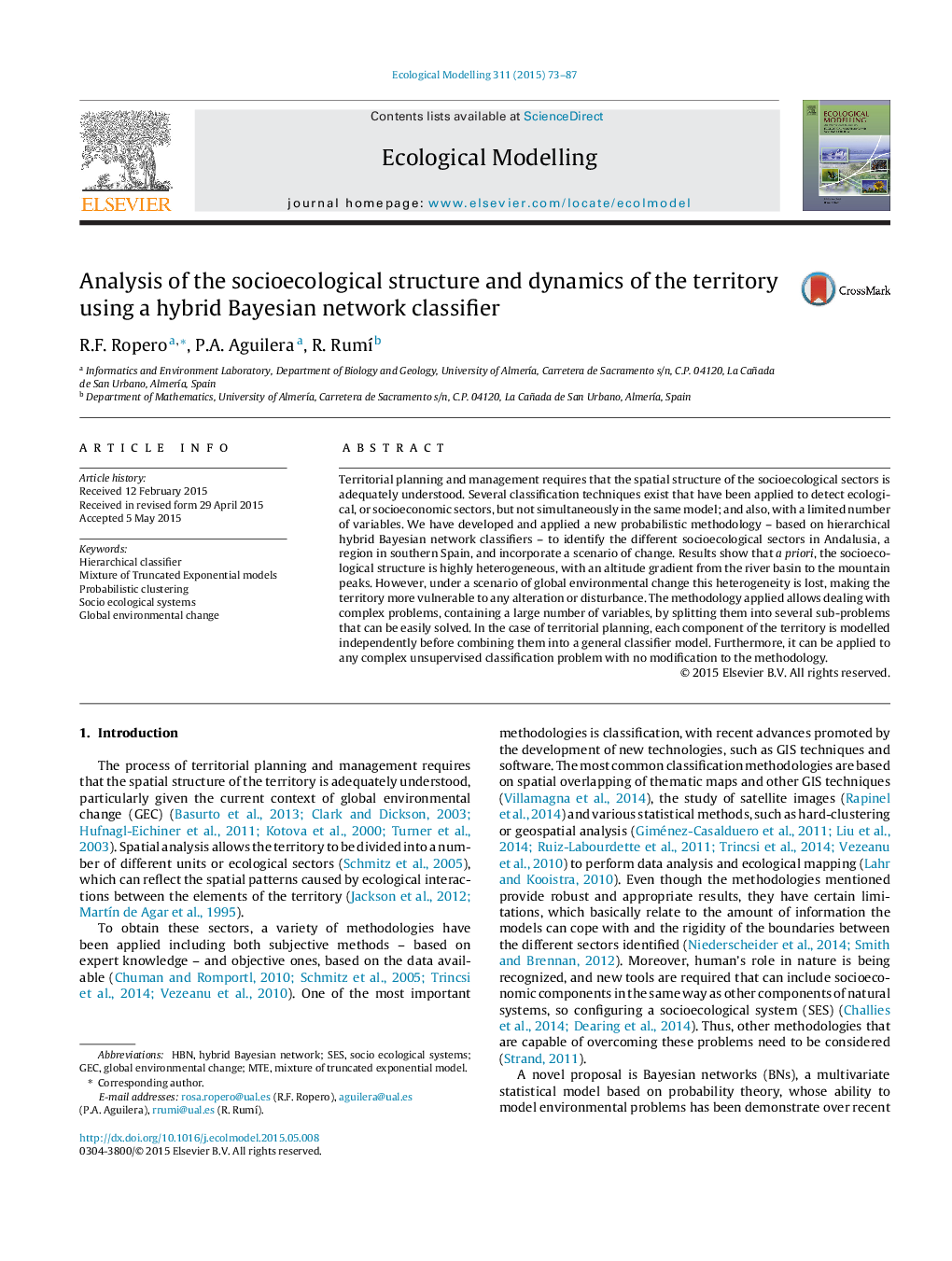| Article ID | Journal | Published Year | Pages | File Type |
|---|---|---|---|---|
| 4375638 | Ecological Modelling | 2015 | 15 Pages |
•A new classification model to detect socioecological sectors is developed.•It splits the problem into several sub-problems that are more easily solved.•Expert knowledge can be incorporated in the interpretation of these sub-problems.•It is able to model GEC scenarios taking uncertainty into account.
Territorial planning and management requires that the spatial structure of the socioecological sectors is adequately understood. Several classification techniques exist that have been applied to detect ecological, or socioeconomic sectors, but not simultaneously in the same model; and also, with a limited number of variables. We have developed and applied a new probabilistic methodology – based on hierarchical hybrid Bayesian network classifiers – to identify the different socioecological sectors in Andalusia, a region in southern Spain, and incorporate a scenario of change. Results show that a priori, the socioecological structure is highly heterogeneous, with an altitude gradient from the river basin to the mountain peaks. However, under a scenario of global environmental change this heterogeneity is lost, making the territory more vulnerable to any alteration or disturbance. The methodology applied allows dealing with complex problems, containing a large number of variables, by splitting them into several sub-problems that can be easily solved. In the case of territorial planning, each component of the territory is modelled independently before combining them into a general classifier model. Furthermore, it can be applied to any complex unsupervised classification problem with no modification to the methodology.
Graphical abstractFigure optionsDownload full-size imageDownload as PowerPoint slide
